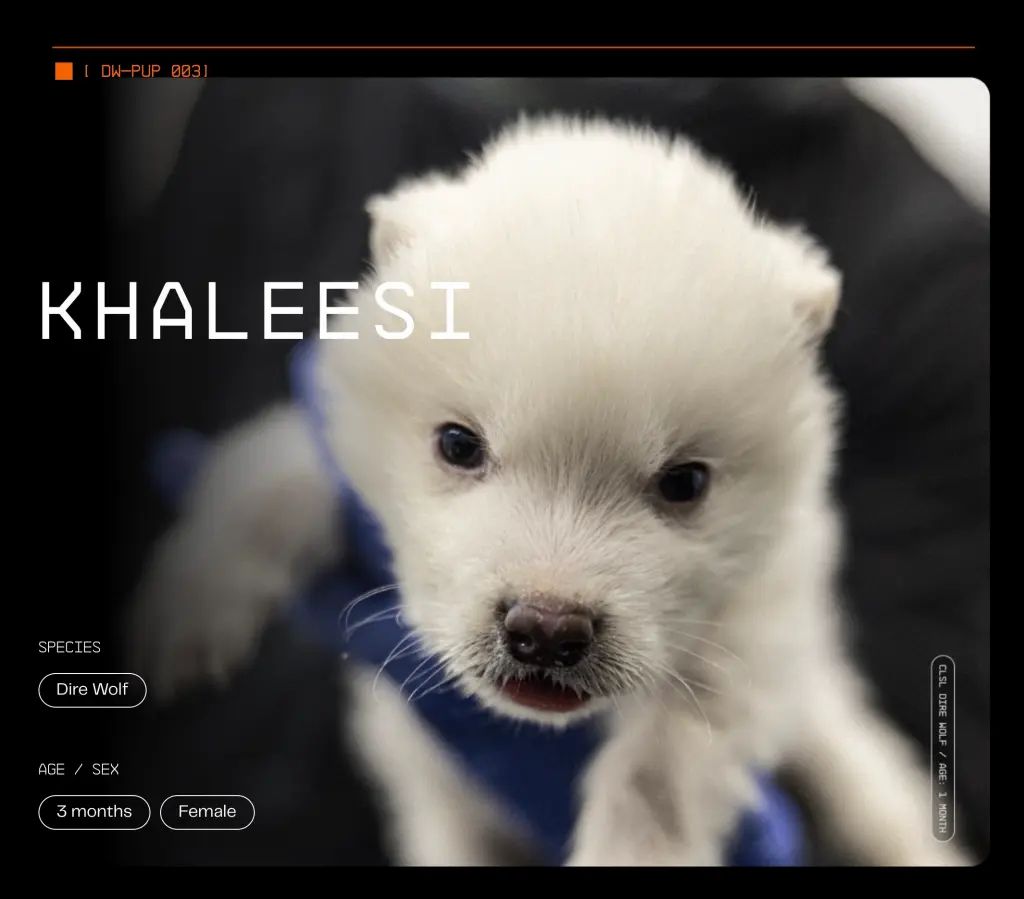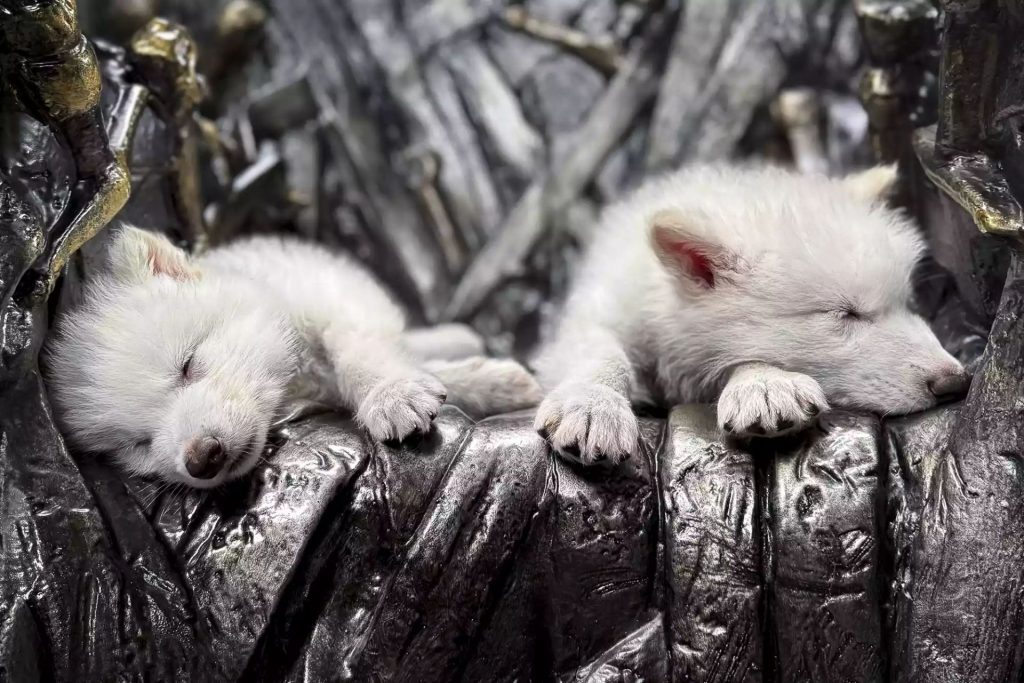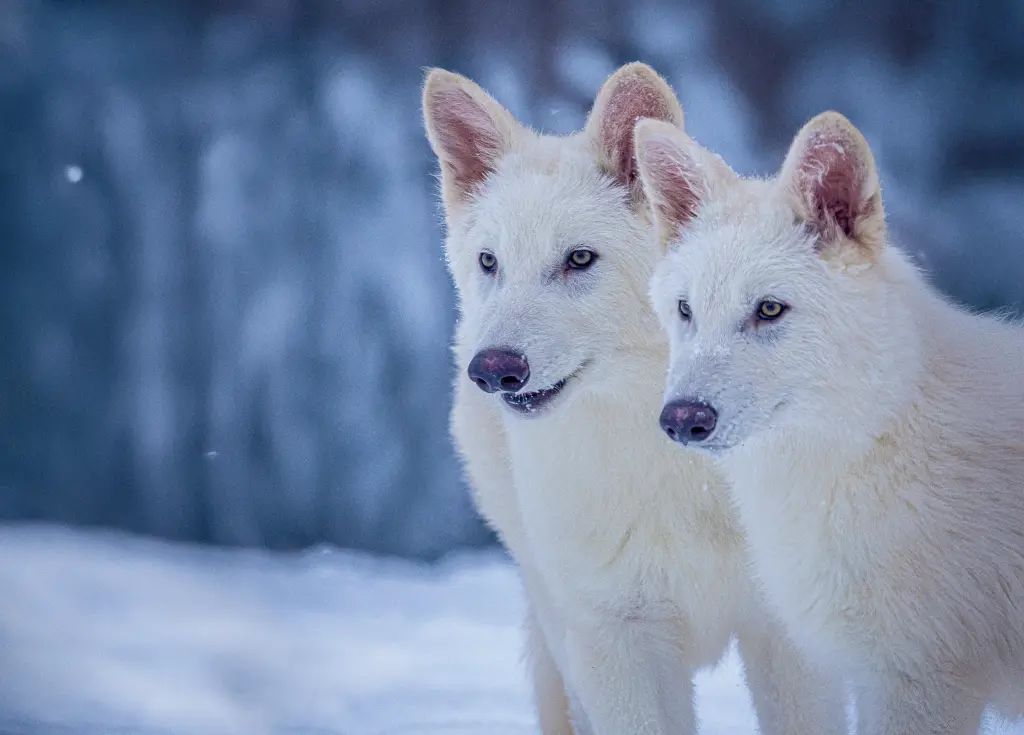Return of the Direwolf: When Legends Roar Again
In a twist that feels like a Game of Thrones twist, dire wolves—the legendary beasts that once roamed North America during the Ice Age—are walking the Earth again. But this time, it’s not fantasy. It’s science.
A Texas-based biotech company has achieved what once seemed impossible: they’ve successfully resurrected dire wolves using ancient DNA extracted from fossils dating back more than 13,000 years. Thanks to cutting-edge genetic engineering and the help of their family dogs, three healthy pups have been born. Their names? Romulus, Remus, and Khaleesi—a nod to both mythology and modern pop culture.

Khaleesi

Romulus and Remus
These pups aren’t just identical. They carry true dire wolf genes, making them the closest living replicas of the powerful predators that once hunted mammoths and bison across America. Now safely bred in a protected reserve, the trio are being closely monitored as they grow—both in power and symbolism.
The original dire wolf went extinct at the end of the Ice Age, likely due to climate change and competition from smaller, more adaptable canids. Their return marks a historic moment in the science of extinction recovery and raises profound questions about the future of wildlife conservation, genetics, and human responsibility to nature.
Dire Wolves – Meet Romulus and Remus—the world’s first de-extinct animals, born on October 1, 2024.
What’s next? Maybe mammoths. Maybe saber-toothed cats. But now, the dire wolf is howling again—this time, under a digital moon.
Yes, the dire wolf’s resurrection is real. Texas-based biotechnology company Colossal Biosciences has announced the success of recreating this wolf, marking a major breakthrough in the field of “de-extinction”.

The process:
Analysis and gene editing: Scientists collected DNA from a 13,000-year-old fossil tooth and a 72,000-year-old skull of a snow wolf. They then analyzed and identified 20 important differences between the snow wolf and the modern gray wolf. Using advanced gene editing technology, they edited 14 genes in the gray wolf cells to recreate the characteristics of the snow wolf.
Using a domestic dog as a surrogate mother: After editing the genes, scientists used the cell nuclear transfer technique to create embryos and implant them into domestic dogs to act as surrogate mothers. The result was three healthy direwolf pups, named Romulus, Remus, and Khaleesi.

This success not only opens up the possibility of reviving other extinct species like the woolly mammoth, but also provides new technology to aid in the conservation of endangered species. Colossal Biosciences is currently working with several conservation organizations and governments to integrate the resurrected species into existing ecosystems.

Note: While this is a remarkable scientific achievement, it also raises many ethical questions and potential impacts on existing ecosystems. The reintroduction of extinct species must be done carefully and with close monitoring.
Would Jon Snow be proud? Probably.
Are science fiction writers mute? Absolutely.
Welcome back, legends. 🐾



